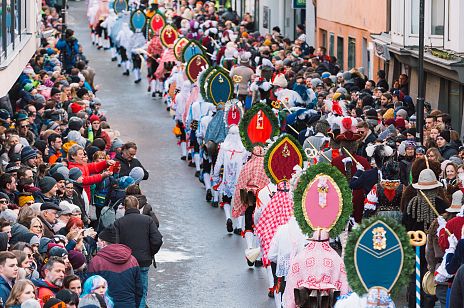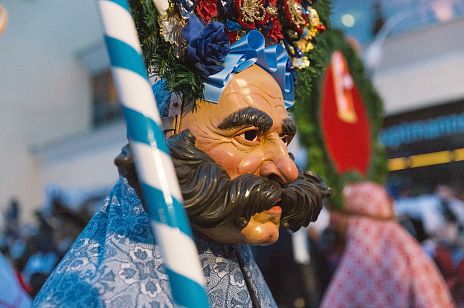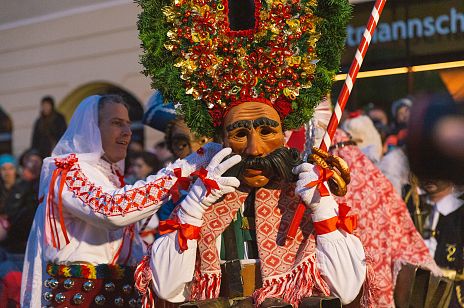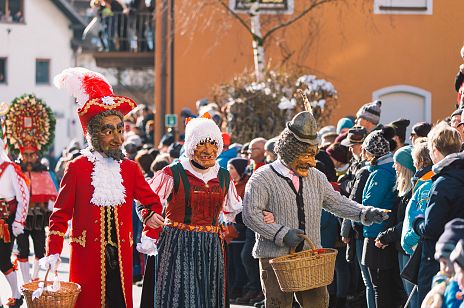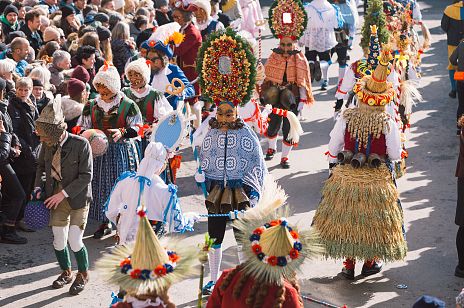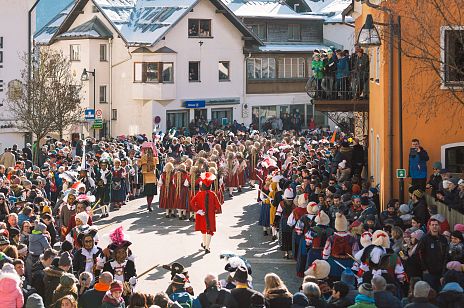World cultural heritage every day
Imster Schemenlaufen
The biggest Fasnacht in the Alpine region takes place every four years in Imst and is known as the colourful Schemenlaufen. Everything revolves around Roller and Scheller, the colourful traditional costumes and mystical masks. Spring dances with winter. Every hand movement follows a ritualised sequence, every leap symbolises the energy of the fertile season. And each jingle echoes like a deep prayer through the alleyways of the city. While Roller and Scheller perform their traditional circle dance, Sackner, Spritzer and Kübelemajen pave the way for the main masks through thousands of spectators who provide a veritable stage for this legendary atmosphere. At the carnival in Imst. In a place that completely absorbs the magic of this special story. Here, people are deeply and emotionally rooted, celebrating what has been a custom for centuries. The knowledge of this is passed down from generation to generation in the family, usually by word of mouth. The masks are made exclusively from wood and the various costumes are partly woven, sewn and embroidered according to historical tradition. The Imst Schemenlaufen is made up of countless mosaics to create a work of art. A living mysticism that is unrivalled and magically attracts thousands of visitors every four years. From the bell at midday, via ‘s'Gangle’ and “Kroas” to ‘Z'sammschalle’ when the bells ring, which is the crowning finale of the Imst Schemenlaufen. In Imst, we don't just experience centuries-old Tyrolean culture up close - here it gets under your skin.
In 2012, the Imst Schemenlaufen was declared an intangible world cultural heritage by UNESCO.
The next big Schemenlaufen will take place on 13.02.2028. In between, on 08.02.2026, the little carnival revellers will make their grand entrance.
The fasnacht, deeply rooted in feelings and thoughts for centuries
Always worth a visit. The Imst Fasnacht house. In addition to the classic museum visit, there are also regular guided tours organised by the Imst Carnival Association. All dates can be found on the museum website.
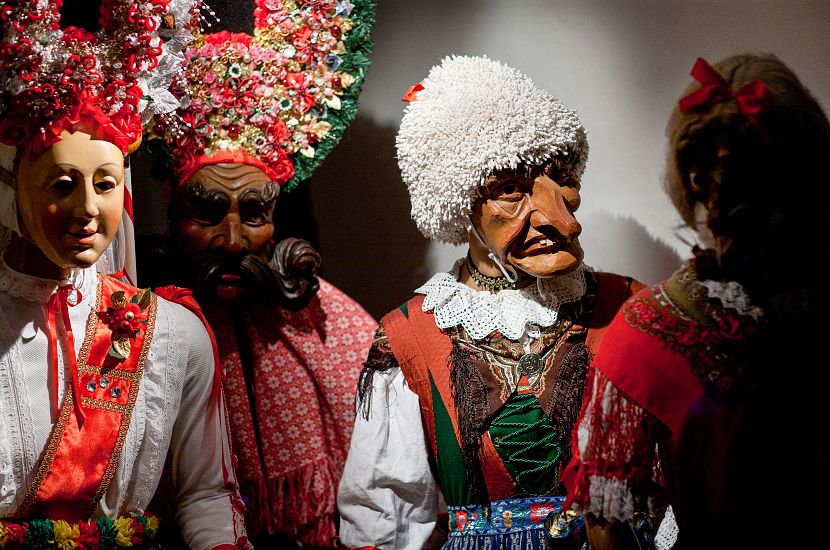
The carnival museum has been housed in the "Glaserhaus", in the immediate vicinity of the Mariä Himmelfahrt parish church, since 2000. There you can experience the colourful carnival hustle and bustle up close all year round. The multimedia presentation has been honoured with both the Tyrolean and the Austrian Museum Prize.
Address: Streleweg 6, 6460 Imst
Telephone: +43 664 60698 221
Mail: office@fasnacht.at
Web: www.fasnacht.at
One day of carnival
One of the most colourful days in Imst begins in the dark hours of the morning, when the chimes of the parish church call for the early carnival mass. A devout moment in which deceased carnival revellers are remembered and a blessing is given for a safe and enjoyable carnival, which turns into light-hearted merriment even before the gates of the church. This is where the "Figatter " is performed, which gets the first spectators in the mood for the day and gives the outstanding misfortune of a fellow citizen the attention it deserves. Just like the criers and fanfare blowers who are already riding through the town and proclaiming the message of today's carnival. Before the 900 or so participants in the carnival slowly immerse themselves in the colourful hustle and bustle and are literally sewn into their costumes by the women according to old tradition. Together with Roller and Scheller, the countless groups, they make their way from the lower town towards Bander's, the Hotel Hirschen. This is where the couples, the Sackner, Spritzer and Kübelemajen, the bears and witches and all the groups of around 26 different masks meet for the official start, the twelve o'clock ringing.
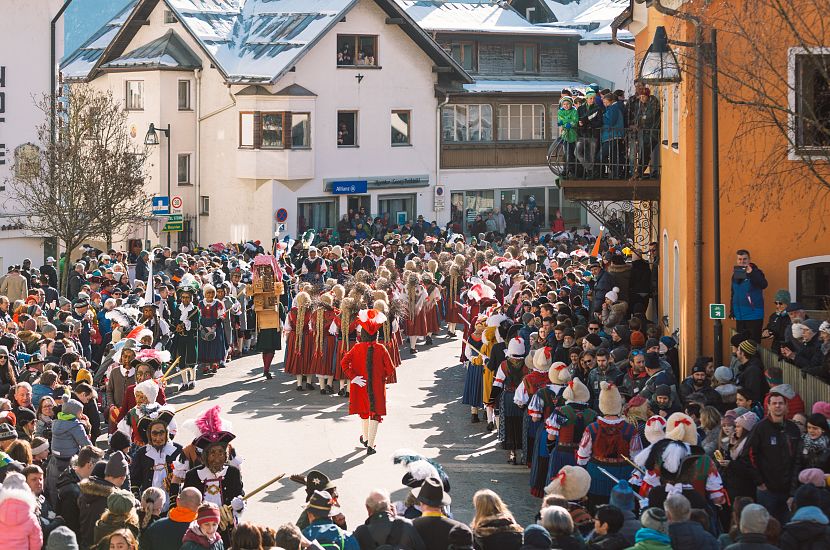
Thousands of people line the streets and alleyways. Expectation is in the air - and little sparks of anticipation for this day of a multifaceted cultural jewel filled with customs. As the first masks clear the way, making room for the Roller, Scheller and laggepaarlen waiting to be deployed in front of this amphitheatre - the first circle of this year's carnival. Once the first brooms can be seen in the air, it's time for the witches and the little witch musicians, who set the beat to the rhythm of the flying skirts. They are followed by the bears with their bear drivers, bird dealers, basket women and the Rofn-Kathl. In between all the colourful action, Kaminer place their metre-high ladders on window sills and daringly climb along the walls of houses. Here, luck literally comes through the window - along with the beautiful view of a glass of schnapps. Accompanied by the singing of the Labara group and the town music, which plays the carnival march.
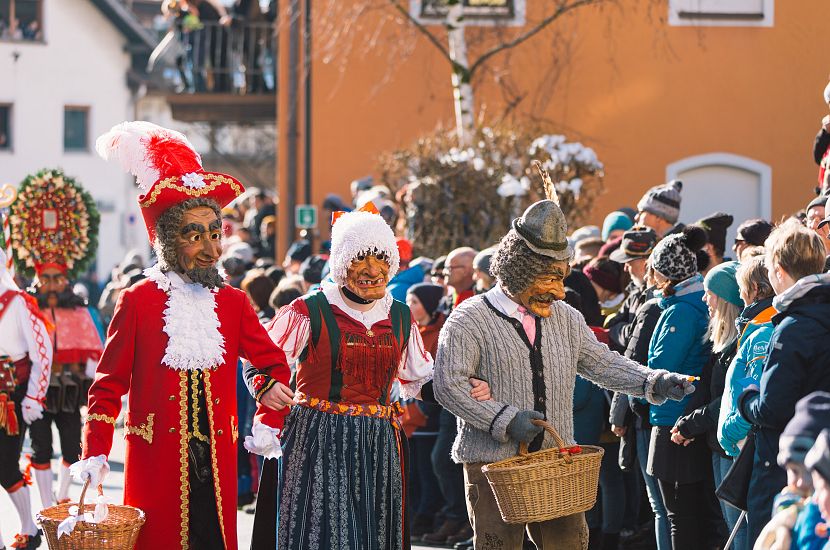
Time and again, masks dance out of line to take visitors into the fray, dance with them or traditionally introduce them. An ancient ritual in which a couple honours the chosen one with a dance. A great honour and an indication that the performance will be sealed with a donation and a glass of homemade schnapps. Hour after hour, alley after alley, dance after dance, the crowd heads towards the lower town, coming ever closer to the town square. Here, where the life of the town used to take place, the carnival also reaches its climax: at the Z'sammschalle, punctually at six o'clock in the evening.
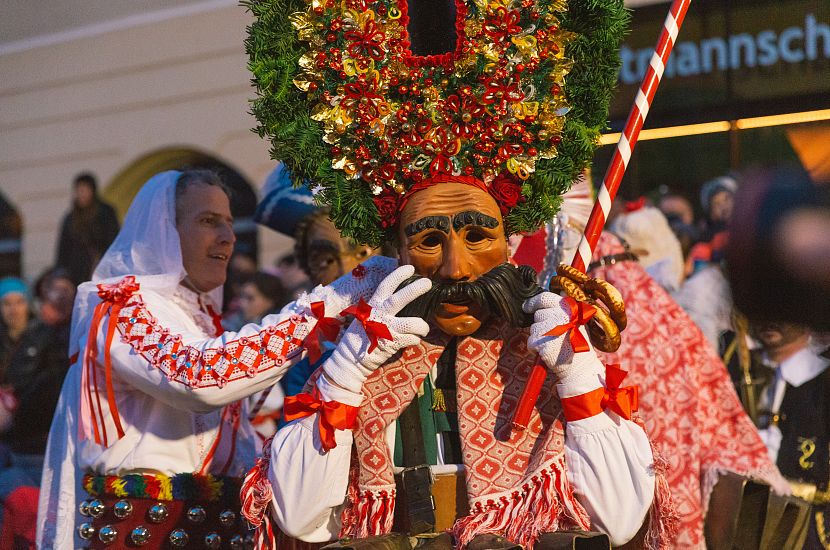
After more than twelve hours, the mask seems heavy and the body "lagg". But greater and more powerful seems the relief and pure joy that has built up over months and years and forms its last Kroas here on the town square, forming a final Gangl and culminating in the grand final act. It is linked to gratitude and humility - and to the burgeoning longing to be able to experience this dance of spring and winter again in four years' time. The bells ring out and the men take off their masks with relief. The atmosphere has something sublime, something sacred. It carries with it a moment of complete enthusiasm. Inseparably connected, rooted in tradition, down-to-earthness and deep gratitude to be part of this precious myth.


